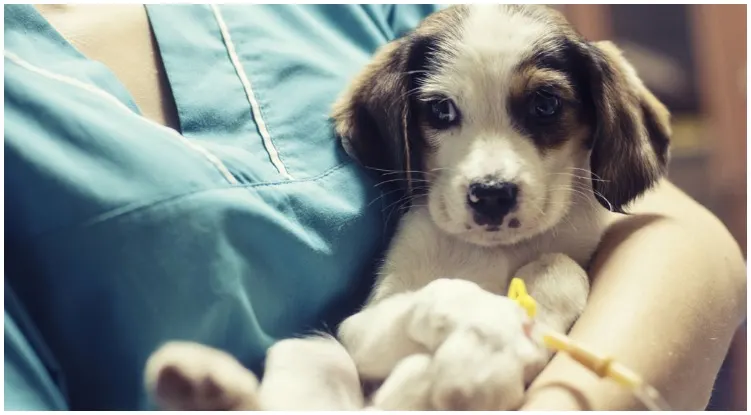There are different diseases that could affect our precious puppies that we have to be aware of. And the canine parvovirus (CPV) infection is definitely one of them. It is also often referred to as Parvo. If you’re wondering what is Parvo in dogs, then you are at the right place. In this article we will go everything that you need to know about the canine parvovirus.
What is Parvo in dogs?
CPV is a highly contagious virus that affects dogs, or in most cases — puppies between six weeks and six months in age.
The virus tames one of two possible forms:
- Intestinal
The intestinal form is characterized by vomiting, diarrhea, weight loss, lack of appetite.
- Cardiac
The cardiac form is less common. Unfortunately, it can often end up deadly and it attacks the heart muscle of very young puppies.
Both of these forms can be successfully prevented by vaccination. However, if left untreated, the mortality rate goes up to 91%.
Symptoms of Parvo in dogs
In some cases Parvo can be asymptomatic, which means that your puppy won’t show any symptoms. However, if your dog does develop the disease, symptoms of the disease could show within 3 to 7 days.
The symptoms of a severe Parvo infection include:
- Severe, bloody diarrhea
- Lethargy
- Anorexia
- Fever
- Vomiting
- Severe weight loss
- Dehydration
- Red, inflamed tissue around the eyes and mouth
- Rapid heart beat
- Pain or discomfort
- Low body temperature
What is the cause of Parvo in dogs?
The cause is an infection with the canine parvovirus. CPV is transmitted either by direct contact with an infected dog, or indirectly, by the fecal-oral route. Some evidence also suggests that the canine parvovirus can live in the ground soil for up to a year.
Treatment of Parvo
The treatment is mostly symptomatic. That basically means that the symptoms your dog is displaying are being treated.
The main goals of the treatment are to keep your dog hydrated, and to control nausea and vomiting. It’s also important to prevent a secondary bacterial infection and control your dog’s possible abdominal pains. In most cases hospitalization will be needed so that medications and fluids can be given to your dog by injections.
Dogs with Parvo often have a very hard time keeping the oral medications and food and water down. So a successful home treatment is extremely hard to achieve.
Pets can be hospitalized up to 7 days in some cases but in most cases 3-5 days. The survival rate for hospitalized parvo dogs is approximately 90%.
Your dog will be able to go home when he’s hydrated, no longer vomiting and eating willingly.
However, it’s important to note that dogs can transmit the disease for up to a month after recovery. That’s why it’s so important to keep your dog away from public places and other pets during that time.
Dogs should get vaccinated for parvo about 3-4 weeks after treatment is complete.
Prevention of Parvo
The most effective ways of preventing Parvo is through good hygiene and vaccination. Be a responsible dog owner and make sure that your canine is up-to-date on all of their vaccines.
Until your dog had a full series of vaccinations, make sure that you are not bringing him to places where it’s crowded with dogs. This includes pet-friendly restaurants, popular hiking trails, boarding facilities, and especially dog parks.
Unfortunately, even if your dog is fully vaccinated for Parvo, there is still a slight chance that he may get infected. So be aware of the possible symptoms. However, in most cases, vaccinated dogs will have very mild cases of Parvo if they do, in fact, get infected.
Some of our other health-related articles:
- Can dogs get fevers? Signs your dog has a fever
- Dog Eye Infection Treatment
- Cross Eyed Dog: Why It Happens
- Bow Legged Dog: What You Need To Know
- How To Induce Vomiting In Dogs?

